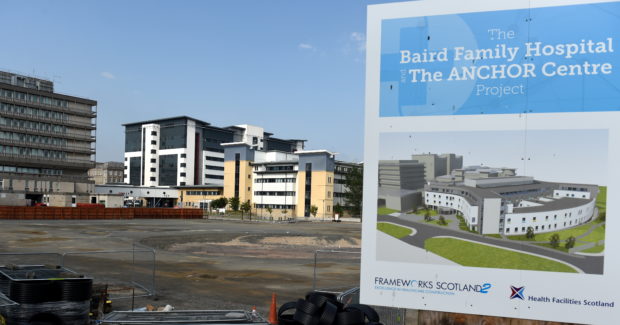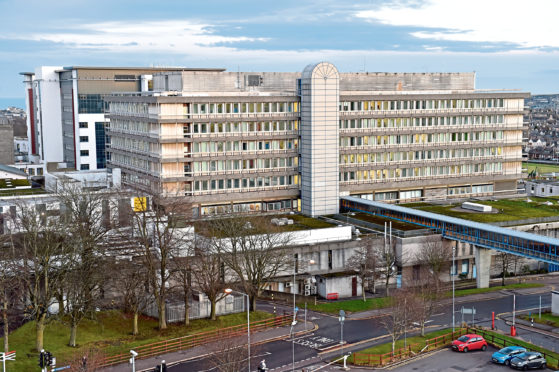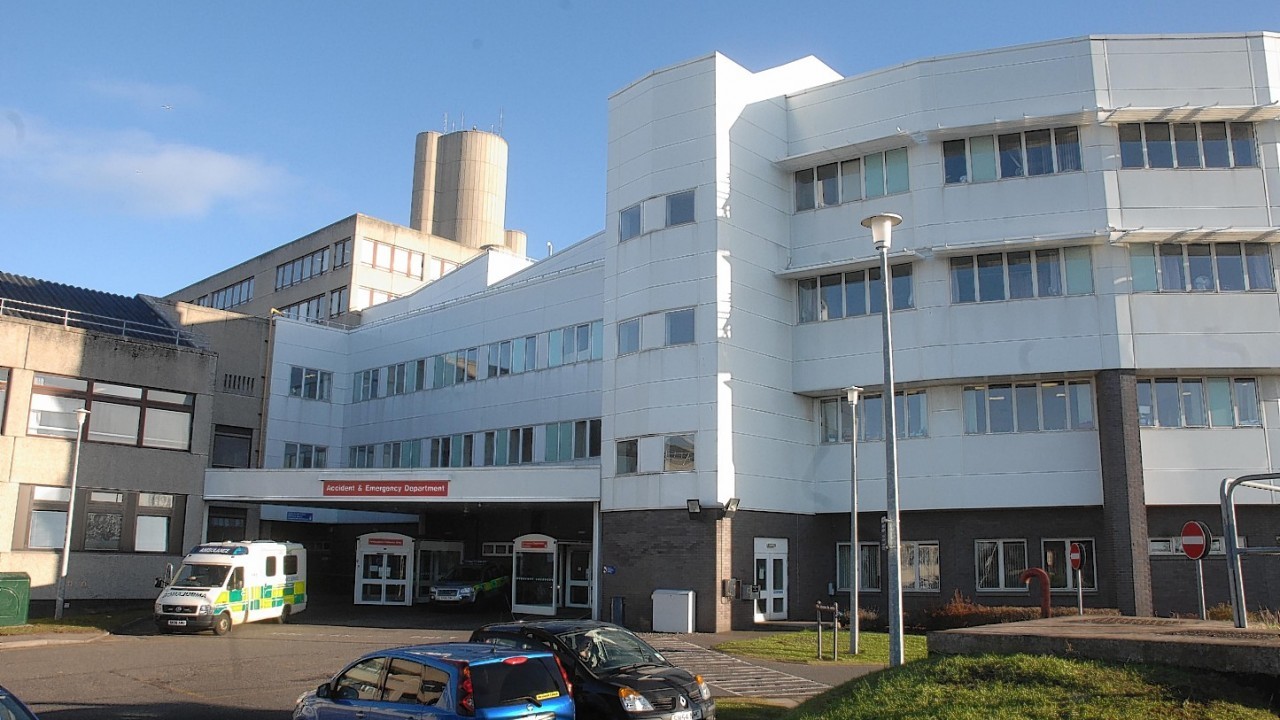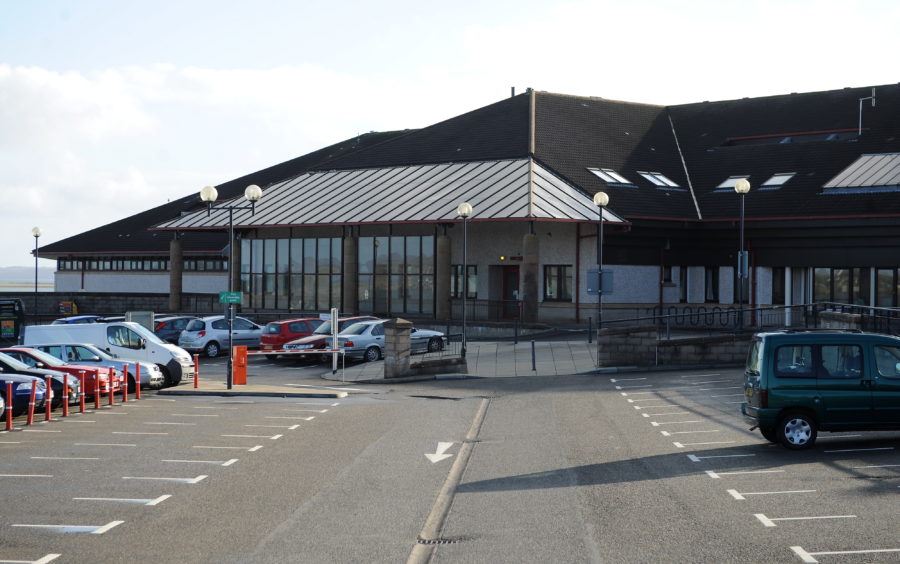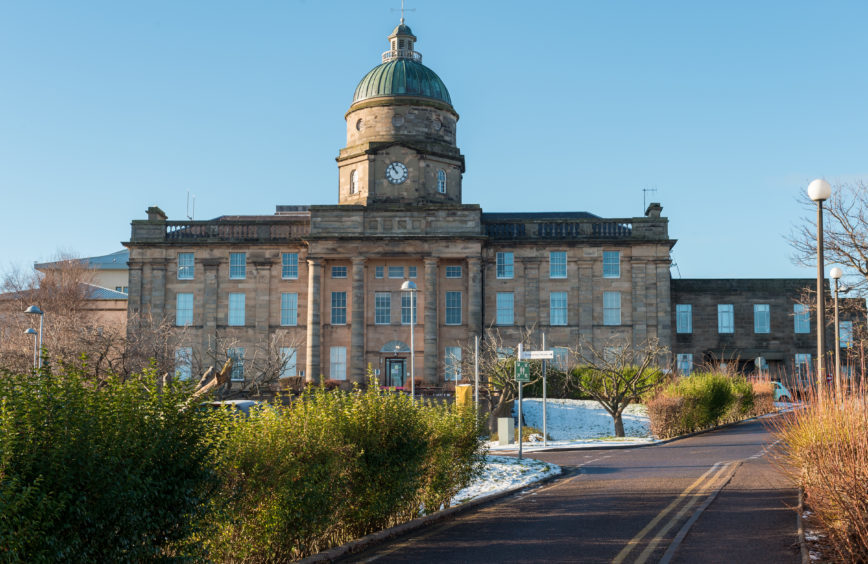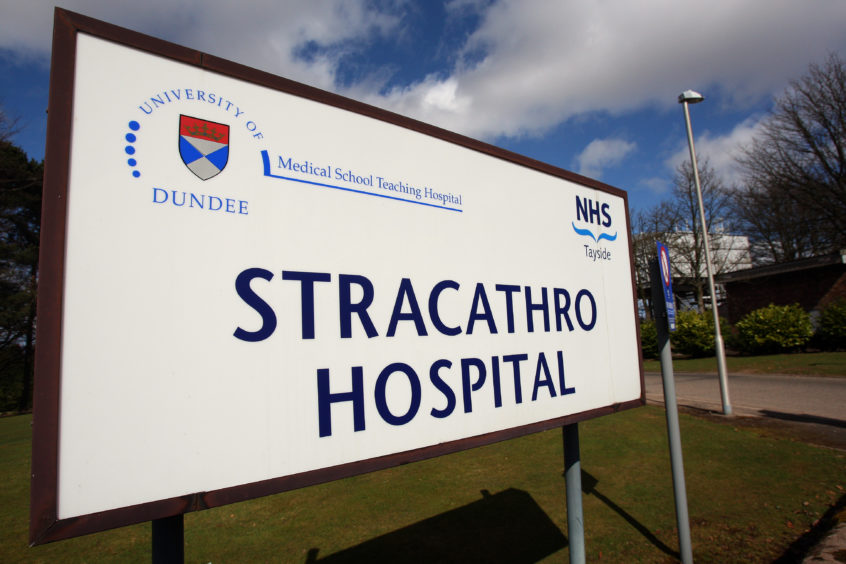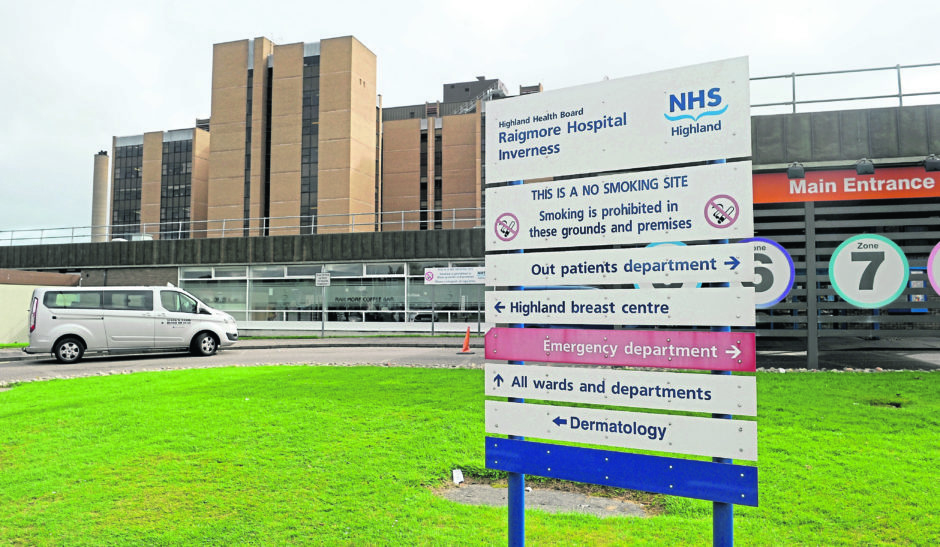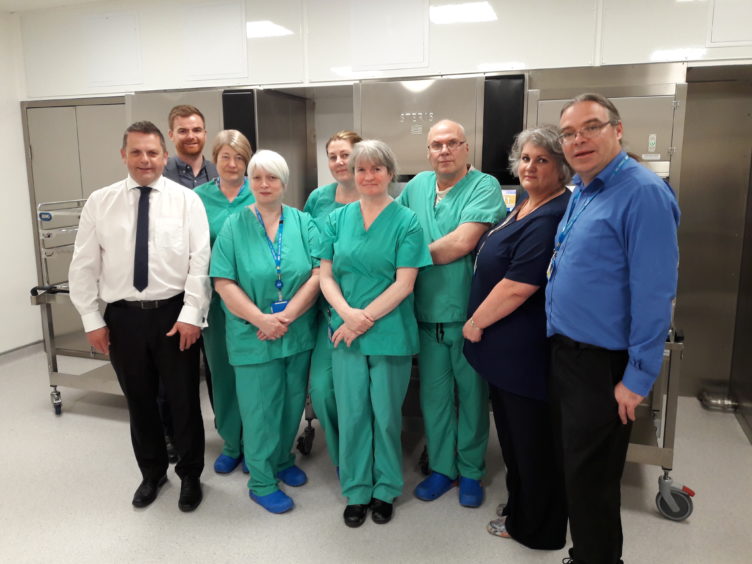Health chiefs have admitted they need more than £1 billion in funding to fix crumbling hospitals in northern Scotland.
The shock figures show that facilities in Tayside, Grampian and the Highlands and islands account for two-thirds of NHS Scotland’s “high risk” repair backlog.
Bosses at the heath boards have suggested that the most pressing problems are at the area’s three largest hospitals – Ninewells in Dundee, Aberdeen Royal Infirmary and Raigmore in Inverness.
Just tackling the “high and significant” issues at the three hospitals would cost £351m, while the total bill to fix all the maintenance problems at properties run by the north health boards would be £1bn.
Clearly this level of risk in the three main acute hospitals requires to be addressed.”
The figures are higher than previous estimates which suggested the repair bill for all health facilities in Scotland would be about £1bn, not just those in the north region.
That is because the calculations are based on more “realistic” project costs, which include VAT, professional fees and enabling work.
The scale of the backlog has been branded “daunting” by opposition politicians, who are warning of a looming “emergency”.
Trade union leaders said that medical staff must be able to do their jobs without “their work being compromised by poorly maintained wards and buildings”.
The figures have emerged just days ahead of the Scottish budget on Thursday this week, and follow a major row about the state of Scottish police stations last month.
The NHS in Scotland is divided into three regions, with the “north” area covering six health boards – Grampian, Highland, Orkney, Shetland, Tayside and the Western Isles.
It covers 26% of the nation’s population and 69% of its landmass, and has 76 hospitals, 239 health centres, 154 independent GP facilities, dental practices, ophthalmologist practices and 306 community pharmacists.
A new, decade-long “regional asset plan” has been produced by the health boards amid concern that 60% of the area’s NHS properties are more than 30 years old.
The report states that the “main risks” identified were at Ninewells, Foresterhill in Aberdeen and Raigmore.
It said the unit cost of the backlog maintenance at the three hospital sites was £200m, of which £117m was considered “significant and high risk”.
But a more realistic estimate for the “project costs” would be three times higher, to take account of VAT, professional fees and enabling costs
The report said that the project costs for “high and significant backlog removal for the three main hospitals would be circa £351m”.
The asset strategy said: “The north accounts for 66% of the high risk backlog in Scotland.
“Clearly this level of risk in the three main acute hospitals requires to be addressed.”
Other significant backlog issues were identified, including a further £34m requirement at Foresterhill in Aberdeen, a need for £6m of work at Perth Royal Infirmary, £12m at Stracathro Hospital, and £7.5m at Argyll and Bute Hospital.
Ageing NHS buildings all over Scotland that are long overdue for repair or upgrading.”
The report said the total outstanding maintenance bill for the region was £344m at unit cost, but the “funding required to deal with the backlog in the north region would be around £1bn plus statutory compliance aspects”.
It added: “If we are to continue to provide a safe and efficient clinical environment for patients, staff and visitors to enjoy in the 21st century, investment in our essential estate has to be prioritised, along with disinvestment on non-essential assets.
“The investment required, however, will be very challenging within the existing funding envelope.”
Financial pressures
More than £118m was invested in projects in the north region last year, but Audit Scotland said recently that capital funding of NHS boards had decreased by 63% over the last decade.
Health boards in the north region, meanwhile, are expecting to have to make £450m of efficiency savings over the next five years, despite rising demand for services.
Dr Lewis Morrison, chairman of BMA Scotland, the doctors union, said: “This report emphasises that the under-resourcing of the NHS isn’t just about staff and the capacity to treat all our patients in a timely way, but that it extends to the very bricks and mortar where healthcare is delivered.
“It’s not just about high profile new builds in the central belt of Scotland, but also often ageing NHS buildings all over Scotland that are long overdue for repair or upgrading to allow us to look after patients in effective, clean modern and safe facilities.”
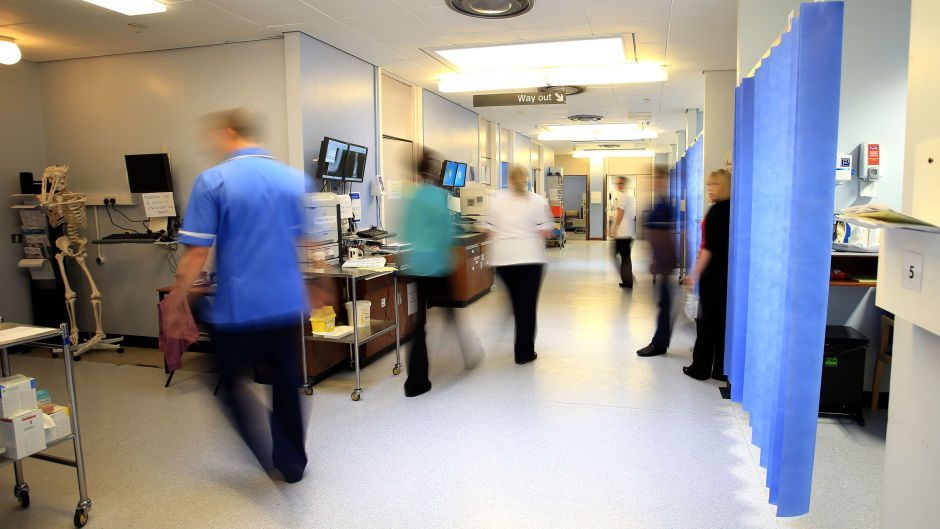
Bob McGlashan, senior officer for the RCN Scotland nursing union, said: “It is very difficult to control threats to patient safety, such as hospital acquired infection, if the wards and buildings where patients are being looked after are in a state of disrepair.
“Nurses and other healthcare staff must be able to do their jobs without their work being compromised by poorly maintained wards and buildings.
“Patient safety is paramount and, even though health boards are under pressure to balance their books, they need to make sure it is not undermined by this backlog.”
He added: “While there is merit in taking a regional approach when looking at this issue, the north region health boards need to address the risks for patients and staff within each of their areas.”
Staff must be able to do their jobs without their work being compromised by poorly maintained wards and buildings.”
According to the report, NHS Grampian has the highest “unit cost” repair backlog of the north boards, at £154m, followed by Tayside at £111m and Highland at £61m.
Aberdeen Royal Infirmary accounted for £75m, while £79m was related to Ninewells Hospital and £45m was at Raigmore Hospital.
Tayside had the biggest bill relating to “high” and “significant” risk issues, at £81m, followed by Grampian, which had £32m in those categories, and Highland, which had £15m.
Alexander Burnett, Scottish Conservative MSP for Aberdeenshire West, said: “This report lays bare the daunting backlog of repairs faced by our local health boards.
“Without proper funding for the Scottish NHS, hard-working staff could be trapped in deteriorating premises for years to come.
“Rather than address this as an emergency, Nicola Sturgeon wastes time debating flags.”
Mike Rumbles, Liberal Democrat MSP for the north-east region, said: “Across the north of Scotland our hospitals are facing a vast repair bill.
“With more than half of health boards now in special measures, it’s clear that our health service is really struggling.
“It must be clear to ministers that Scottish health boards do not have the funds they need for capital investment and maintenance.”
‘Significant investment planned’
A spokeswoman for the NHS boards in the north region said: “The north of Scotland estate comprises a wide range of buildings and land on more than 400 operational sites across the north with a total floor area of around 1.2million sq m.
“61% of the north’s premises are over 30 years old and there is significant investment planned over the next three years to improve this.
“Modern healthcare facilities are complex and regulatory standards are continually evolving and becoming more rigorous.
“Over £118m was invested in assets and infrastructure in the north last year to meet those standards and improve the healthcare environment.
“Within the north annual spend on backlog maintenance is directed to the most significant and high risk issues.
“The north regions are continually reviewing their priorities for each financial year around backlog maintenance investment and have significant plans in place to address those priorities, ensuring the facilities are kept both operational and safe for staff and patients.”
A Scottish Government spokesman said: “The Scottish Government is investing extensively in NHS infrastructure in the north of Scotland including in the £64m Balfour hospital in Orkney, which opened in 2019, and providing over £200m to the Baird Family Hospital and Anchor Cancer Centre in Aberdeen, which is expected to start construction later this year.
“We welcome the production of the north of Scotland’s regional asset management plan as it demonstrates that local boards are working collaboratively across the region to deliver the appropriate level of local, regional and national clinical services.
“All NHS Boards are expected to manage their estate and any associated backlog maintenance on a risk management basis, that ensures the safe delivery of clinical services.”
Where the problems lie — Repair bill by health board and hospital
NHS Grampian
Foresterhill Health Campus backlog unit cost: Aberdeen Royal Infirmary: £77m. Aberdeen Maternity Hospital: £6.3m. Royal Aberdeen Children’s Hospital: £220,000
The health campus requires significant further investment to fulfil the Foresterhill Development Framework, which was approved by Aberdeen City Council in 2008 and updated 2014. This framework facilitates the development of new elective care facilities: the Baird Family Hospital and ANCHOR Centre, along with the infirmary becoming one of the four major trauma centres in Scotland. Plans are also progressing with partners in the re-provision of mortuary services for the north-east of Scotland. In the longer term, solutions are required for the re-provision of the remaining in-patient accommodation and theatre services currently located in east end 2 and phase 2 (100 years old and 50 years old respectively). A longer term solution is also required for the provision of ambulatory care, laboratory medicine services, medical physics and the relocation of the central decontamination unit, laundry services and facilities services.
Dr Gray’s Hospital, Elgin, backlog unit cost: £4.2m
The site is occupied by mental health services, where the clinical environment requires significant investment.
The acute care of the elderly and general medical ward requires significant refurbishment to provide modern clinical services for patients.
Investment is required to enhance the diagnostic and outpatient facilities in the hospital to support the elective care strategy and this may result in an MRI suite being established.
Woodend Hospital, Aberdeen, backlog unit cost: £6.3m
The site is occupied by buildings dating from 1901, some of which are no longer able to provide suitable, modern, clinical environments.
Care of the elderly services, located in the south block, require a more appropriate setting for modern clinical care of patients.
The staff home was recently decommissioned and vacated, which has facilitated its closure and future disposal of this building dated from 1901.
Royal Cornhill Hospital, Aberdeen, backlog unit cost: £12.4m
Work has commenced to improve the patient environment (including patient safety), on a three year refurbishment programme, on the six acute admission wards with further work planned for the remaining wards.
The child and adolescent mental health service (CAMHS) recently moved into a new single “centre of excellence” on the former City Hospital site freeing up turnaround space on the RCH site to allow the above refurbishment programme to progress.
The learning disability inpatient ward accommodation is located in a remote part of the Cornhill site and requires to relocate to a more appropriate and safer setting for patients and staff closer to the clinical core of the Royal Cornhill Hospital.
NHS Tayside
Ninewells Hospital, Dundee, backlog unit cost: £75m
The main and standby electrical power systems on the Ninewells site are no longer fit for purpose. An approved programme of works to rectify these electrical deficiencies is underway.
The phased programme of works will be undertaken based on 11 zones across the Ninewells site and will be completed in 2025/26.
The Children’s Theatre Suite (ARCHIE) Project will see the creation of a first class children’s theatre suite designed and built for children and their families and with significant input from children and families.
The contribution from the ARCHIE Foundation will ensure that a high quality, 21st century child/family friendly environment will be provided.
Neonatal Intensive Care Unit Project addresses issues of safety for babies, parents and staff.
Due to it being necessary for the unit to decant for the duration of the building works, the opportunity will be taken to make several additional improvements within the unit itself which will ultimately lead to improvements in the service experienced by babies and families.
Perth Royal Infirmary backlog unit cost: £6m
The board is currently planning for the new elective care facility to be located on this site.
Plans are being put into place to increase the number of elective care procedures where the hospital will be established as a centre of excellence for elective benign urology and diagnostic urology, elective gynaecology; intermediate general surgery; and elective orthopaedic surgery; specifically arthroplasty surgeries; as well as wide range of day and short stay surgical procedures.
The separation of scheduled and unscheduled care will enable more elective procedures to be undertaken without disruption from fluctuations in unscheduled care.
Stracathro Regional Treatment Centre (SRTC) backlog unit cost: £4m
To achieve a more effective and sustainable model for the hospital, it is necessary to look critically at how care is delivered, to meet increasing demand and to ensure services are affordable and sustainable.
The provision of a mobile theatre on the Stracathro site has progressed for the short term (approx. 12months).
A longer term solution is still under consideration. This would enhance the available resource to provide focused support in improving the treatment time guarantee position for both NHS Tayside and NHS Grampian.
Mobile theatres have not previously been located on the Stracathro site, therefore enablement work took place over the summer of 2019.
NHS Highland
Raigmore Hospital, Inverness, backlog unit cost: £45m
The £39m development to update and redesign critical care services is under way and was due for completion by end of 2019.
This is the single largest investment the hospital has had since it was built. The operating theatres are being refurbished and an additional theatre will be added to bring the total number of theatres in the suite to 10.
Work continues on upgrading building infrastructure including the installation of sprinklers.
Plans will also continue to develop around the long term requirements of the hospital and consultation is underway with Highland Council as to how this proposal integrates with local plans and the Inverness city deal funding package to improve the infrastructure serving the hospital.
Pressure continues to grow on maternity services, and is likely to result in the requirement for a community midwifery unit for the Inverness area.
NHS Shetland
Gilbert Bain Hospital, Lerwick, backlog unit cost: £4m
Investment is currently required to extend the ambulatory care facility within the hospital, improving the quality and effectiveness of day surgery procedures and to avoid unnecessary admissions to hospital.
A series of scenario planning workshops have been undertaken to shape the future of health and care services in Shetland.
That work is helping inform the asset management strategy and specifically the number, location, and use of our buildings.
The current approach of investment in technology within Gilbert Bain Hospital, supporting the repatriation of activities and care pathways to Shetland, resulting in patients having to travel less for unnecessary appointments, will continue.
Within the life of this plan consideration of replacement of key infrastructure is being considered, including the development of a new hospital, which could facilitate many more opportunities to redesign services.
NHS Western Isles
Western Isles Hospital, Stornoway, backlog unit cost: £1.566m
The central decontamination unit (CDU) is currently being redeveloped and extended. The existing CDU shut down at the end of March 2019 to facilitate the joining of the existing unit to the new extension.
At this point the existing areas will be altered, refurbished and all the decontamination plant and equipment will be replaced. In 2018 a new CT scanner was purchased with cost, including alterations to allow for the CT installation.
The development will facilitate the installation of a new fluoroscopy suite in the radiology department at the hospital during 2019/20. Over the next five years there will be an investment of approximately £800,000 to replace imageing equipment at Western Isles Hospital and the Uist & Barra Hospital on Benbecula.
New equipment at St Brendan is included in the capital expenditure for the St Brendan’s replacement project. Plans to redesign mental health services are still very much a work in progress.
However, care for the elderly population suffering from dementia is now centred in the community and, as a result, late in 2018, the board took the decision to close the inpatient services (Clisham Ward) at Western Isles Hospital.
The full implications of this in terms of investment in WIH will not be known until the mental health service redesign, and appraisal process is complete.
At the moment we do not have a definitive proposal for the redevelopment or use of Clisham ward, other than it will be used as a decant ward in 2019/20 to facilitate the refurbishment of other areas of the hospital.
The rolling programme of backlog maintenance and refurbishment works will continue for the next five years, with the refurbishment of the maternity unit and medical ward 2 in 2019.
During the refurbishments works the ward will be closed and services moved temporarily to Clisham Ward, which will be used as a decant ward. In 2020/21 the main reception and the education departments will be refurbished.
Uist & Barra Hospital backlog unit cost: £1,265
Plans are progressing to redesign the hospital in Benbecula, providing a more streamlined service for the community, and one that is more appropriate for today’s patient pathways.
This includes modernising dental services, a GP surgery aligned with medical officer provision at the hospital; and a fit for purpose resuscitation area.
Isle of Barra – New hospital/healthcare hub
The outline business case was approved in April 2018. The project is now going through the Hub Stage 1 design process. The project costs are currently being reviewed in tandem with the design.
The design process is still very fluid as the building layout and the final floor area of the buildings have not been fully agreed at the time of writing. The earliest current estimated commencement of construction is March 2020.
